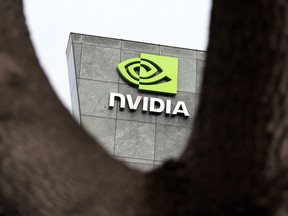Markets have turned into a one-trick pony — and that doesn't bode well
Martin Pelletier: We are breaking new ground with a level of concentration in so few companies not seen in decades

Article content
Global markets have turned into a one-trick pony, with all the movements dominated by just a handful of stocks, all within the tech sector in the United States.
The S&P 500 has now reached a three-year high, according to Jason Goepfert at Sentimenttrader.com, but it is with less than 40 per cent of stocks being above their 10-day moving average, less than 60 per cent above their 50-day average and less than 70 per cent above their 200-day average. That’s only happened once since 1928: Aug. 8, 1929.
The ratio of the equal-weighted S&P 500 to the cap-weighted S&P 500 has also now fallen to its lowest level since 2009, according to Liz Ann Sonders, chief investment strategist at Charles Schwab Corp.
And since Microsoft Corp. announced its US$10-billion investment in ChatGPT in January 2023, the Magnificent Seven have generated more than 100 per cent of the S&P 500’s price return, with 42 per cent of that return coming from one stock, Nvidia Corp., said macro researcher Andy Constan.
As of Feb. 1, 2023, Nvidia had added US$750 billion in market cap over 70 consecutive trading days, which is an average of US$10.7 billion per day. That is something considering its market cap five years ago was only US$90 billion and it is now the same size as Amazon.com Inc., making it the world’s fifth-largest company.
By spending US$5 billion over the past five years, investors have boosted Nvidia by more than US$1.61 trillion in market value, a 19x increase. Somehow, Nvidia is going to backfill trillions by only spending US$10 billion over the next five years, which paints a picture as to how large the expectations are for artificial intelligence and how much market share the company is expected to have.
It isn’t just Nvidia. Meta Platforms Inc. on Feb. 2, 2024, experienced the largest one-day gain in market capitalization in Wall Street history by adding US$196 billion in market value, bringing its total market capitalization to more than US$1.22 trillion, according to Dow Jones Market Data. Amazon last did that in February 2023 when it added $191.3 billion.
We are breaking new ground here with a level of concentration in so few companies not seen in decades. Daily moves are now so large that they eclipse the size of some of the largest companies in Canada and the world. What is particularly scary is that the average professional trader is between 30 and 39 years old, according to the U.S. Securities and Exchange Commission, so they likely wouldn’t know this trend is unusual.
Oil: that’s a dead commodity, why would anyone touch it? Industrials: if it isn’t AI, it isn’t worth the time. Banking: who needs banks when you have bitcoin? Electric vehicles are more than transportation, they’re data centres or smartphones on wheels.
Some may ask how we got here?
For 15 years, a lot of U.S. tech companies used either government subsidies or leveraged a near-zero cost of capital to give us products and services at or below cost in order to build out and solidify massive ecosystems that only they control.
“Tech companies conquered the world not with software, but via the usual route to power: ducking regulation, squeezing workers, strangling competitors, consolidating power, raising rents, and riding the wave of an economic shift already well underway,” reads an excerpt from An Alternative History of Silicon Valley Disruption in Wired magazine.
While the focus of many people was entirely on things such as climate change and big evil oil, something else quietly took over: Big Tech. This has transformed the markets, the U.S. economy and our lives in many ways that so few realize.
With the explosive growth of passive investing, these companies ended up dominating the indexes and forcing all of us to buy more of them, thereby compounding their dominance. Most are now transitioning from revenue growth to profitability, so it wouldn’t be a surprise to see that result in more layoffs and, eventually, price increases — look at Apple’s latest product launches for example.
These companies can now do such things given they have solidified their oligopolies. In addition, they likely no longer need the Fed’s easing or low-rate policies since many shored up their balance sheets, and this is one reason, aside from AI, why their share prices are back at levels prior to when the rate hikes began.
Where do we go from here? This is a rather difficult question to answer, especially if you haven’t experienced anything like it before. The few of us old-timers who went through the 1990s certainly remember, but we’re hoping for a much different outcome.
Martin Pelletier, CFA, is a senior portfolio manager at Wellington-Altus Private Counsel Inc, operating as TriVest Wealth Counsel, a private client and institutional investment firm specializing in discretionary risk-managed portfolios, investment audit/oversight and advanced tax, estate and wealth planning.
If you like this story, sign up for the FP Investor Newsletter.




